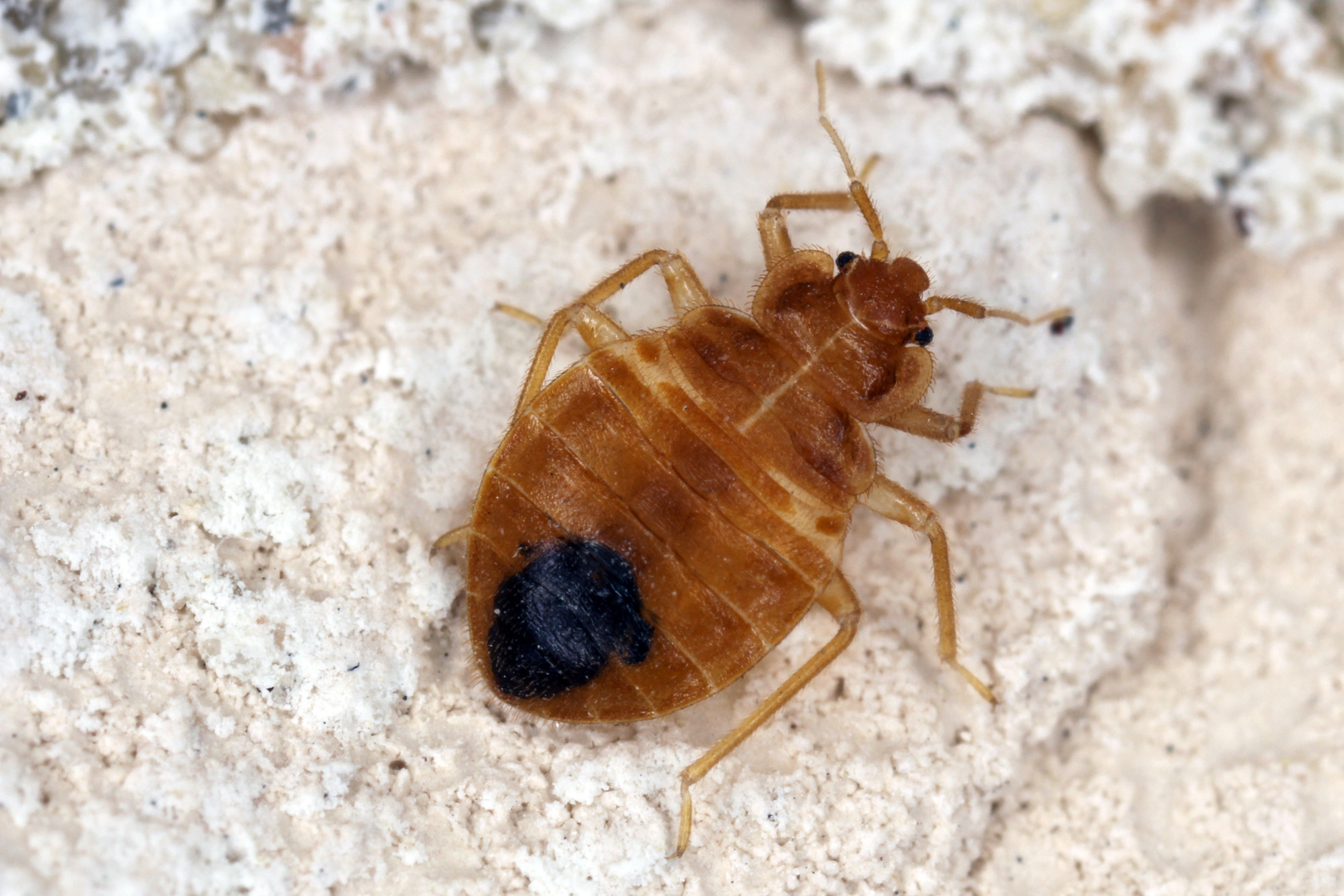Did you know that one in five Americans has either had a bed bug infestation in their home or knows someone who has? For those who’ve endured this plight, you know the worry, the itch, and the frustration. The mere mention of the words “bed bugs” is enough to send shivers down your spine, cause your skin to crawl, and ignite an irresistible urge to scratch.
This tiny terror has been a bane of peaceful sleep for centuries. To help clear up confusion, we’ve written a guide that walks you through tried and tested bed bug treatment and removal strategies. Keep reading to find out more.
First Steps for Getting Rid of Bed Bugs
If you have bedbugs in your home, don’t panic. There are several simple steps that you can take to get rid of them. Here are the most important things that you will need to do.
Move Your Beds
Start your journey towards a bed-bug-free life by creating a fortress around your sleep zone. Bed bugs are crafty climbers. They use walls as highways to your peaceful slumber.
Therefore, pull your bed away from the wall, and don’t let any linens touch the floor. This simple act is one of the most effective pest-free moving tips that can significantly hinder the bugs’ mobility.
You should also wash your headboards thoroughly. Remember, they’re known hotspots for these invaders. Use a brush to scrub off any visible eggs or bugs, and follow it up with a good wipe-down using hot, soapy water.
Vacuum Everything
After establishing a safe zone, the next crucial step in your bed bug treatment plan should be to vacuum everything. The mattress, bed frame, box spring, and carpet are among the most popular bedbug hideouts.
The vacuum cleaner, with its powerful suction, can be your best friend in this mission. Don’t forget the crevices and corners where bed bugs love to hide.
One simple thing you can do to prevent re-infestation is to dispose of the vacuum bag outside your home immediately after use.
Suffocate the Bed Bugs
Once you’ve vacuumed, further secure your bed. You can easily do this by placing specially designed bedbug-proof covers over your mattresses and box springs.
These covers are made of materials that suffocate the bugs trapped within. They do this by cutting off their oxygen supply. Keep these covers on for at least a year since bed bugs can survive for many months without feeding.
Wash and Dry Infected Items
If there are signs of bed bugs on your bedding, clothing, or soft toys, don’t panic. Washing and drying these items at high temperatures can effectively kill bed bugs at all life stages.
You will need to wash at a minimum of 60°C (140°F) and dry on the highest heat setting for at least 30 minutes. Always seal cleaned items in plastic bags in order to avoid re-infestation.
Steam Clean Infested Furniture
When dealing with items that can’t be washed or dry cleaned, steam cleaning is an excellent alternative. The high temperature kills the bed bugs and their eggs without damaging the furniture.
Remember to use a high-heat setting and move the steam cleaner slowly. This will allow the heat to penetrate into the crevices where bed bugs hide.
In many situations, it is less expensive to hire a pest company to do this for you than it is to buy a new steam cleaner.
Seal Cracks in Infested Rooms
Another effective bed bug treatment strategy involves sealing any openings or cracks where these pests can hide. This includes gaps in the wall, floorboards, and around pipework.
Sealing these areas will eliminate potential hiding spots. It will also prevent the bugs from moving between rooms. A good-quality sealant will do the trick.
Throw Away Infested Items
In severe infestations, you may need to accept the harsh reality that some items are beyond saving. If items are heavily infested and cannot be effectively treated, get rid of them right away.
It is especially important to do this if you are in the process of moving to a new home.
Call a Pest Control Company
Sometimes, despite your best efforts, the infestation persists. If you’re still seeing signs of bed bugs after implementing these measures, it’s time to call in the professionals.
A reputable pest control company in Florida will have the knowledge and equipment necessary to handle extensive infestations. They can provide a comprehensive bed bug treatment plan that suits your situation.
Natural Bedbug Solutions
Many people prefer to naturally get rid of bedbugs. This tends to be a less effective strategy.
But there are various things you can do to get rid of bedbugs that do not involve using harsh chemicals. Here is what you need to know.
Freeze Infested Items
One natural method to tackle a bed bug problem is by freezing infested items. Bed bugs, like most common bedroom pests, cannot survive extreme temperatures.
If possible, place smaller infested items in a bag and put them in the freezer for at least 72 hours. It’s important to ensure the freezer is set at a temperature of 0°F or below to effectively kill these pests.
Use Diatomaceous Earth
Diatomaceous earth (DE) is a natural powder made from tiny fossilized aquatic organisms. It is a safe and effective remedy against bed bugs. It works by breaking down the insects’ exoskeleton.
This causes their bodies to dehydrate. Bedbugs that come into contact with this powder will eventually die.
Simply dust a light layer of food-grade diatomaceous earth around your sofas, mattresses, and other infested areas. Even though DE is a natural product, always remember to wear a mask when applying it.
Set Up Bug Interceptors
Bug interceptors, or bed bug traps, are simple devices that take advantage of these pests’ inability to climb smooth surfaces. Place these interceptors under the legs of your bed or other furniture.
These tools will trap the bugs as they try to climb up or down. This method not only helps reduce the number of bed bugs but. It also helps monitor the severity of the infestation.
Don’t forget to check and clean the interceptors every few weeks.
How to Spot a Bedbug Infestation
The good news about bedbug infestations is that it is easy to figure out whether or not they are in your home. Here are the steps you should take to spot a bedbug infestation.
Search for Bugs, Nymphs, and Eggs
The first step to identifying a bed bug infestation is looking for the bugs themselves. Adult bed bugs are about the size of an apple seed. They are reddish-brown in color and have a flat, oval shape.
Nymphs or baby bed bugs are smaller, lighter in color, and become redder after feeding. Bed bug eggs are tiny.
They are about the size of a pinhead and are white or translucent. You might find these in cracks and crevices around your bed.
Keep an Eye Out for Molted Skins
Bed bugs go through five stages of development and shed their skin each time they molt. If you find these discarded skins around your bed, it’s a strong indicator of an infestation.
Bed bug feces also provide evidence of their presence. The feces are tiny, dark spots that can stain the fabric. They may appear as small black dots in the corners of the mattress or anywhere bed bugs are hiding.
Inspect Your Bedroom
One thing to understand about bed bugs is that they’re experts at hiding and that they are one of the world’s most common bedroom pests.
They tend to stay near or on beds, but they can live in other places too. Look around all furniture, in between the joints, behind wall hangings, in the folds of curtains, and under rugs.
Keep in mind that they also can live in electrical sockets and appliances, behind peeling wallpaper, and in the corners of the ceiling.
Inspect Other Rooms
Once you’ve confirmed the presence of bed bugs in one room, you’ll need to check the rest of your home. Bed bugs will move to other areas through clothing, furniture, and even through the walls.
Start with rooms that are closest to the initial infestation. You can then work your way out. Pay special attention to areas where people sleep or lounge. These are the places bed bugs are most likely to populate.
Get Professional Help
Sometimes, despite your best efforts, it can be challenging to confirm a bed bug infestation. In such cases, don’t hesitate to seek professional help.
Pest control professionals have the training, tools, and experience to quickly identify signs of bed bugs that might not be visible to the untrained eye.
They can also provide an accurate assessment of the severity of the infestation and recommend the most effective treatment options.
Preventing Bedbug Infestations
If you take preventative action to keep bedbugs out of your home, you will never need to worry about getting rid of them. It is easier to do this than you might think. Here is what you need to know.
Stay Organized
An orderly home provides fewer hiding places for bed bugs. This is why keeping your space tidy isn’t just about aesthetics. This is a practical step in preventing bed bugs.
Regularly declutter your space, especially bedrooms, and living areas. Get rid of unnecessary belongings and organize the remaining ones.
Inspecting Used Furniture
You can save lots of money by buying used furniture. But understand that you might unintentionally invite bed bugs into your home.
Always thoroughly inspect used furniture, especially beds, and couches, for any signs of bed bugs before bringing them inside.
Look for live bugs, molted skins, eggs, and fecal stains. If you have any doubts, it’s a good idea to pass on the item.
Wash Items That Might be Infested
If you suspect that any items, like clothing or linens, might be infested, you’ll need to wash them immediately in hot water, followed by a high-heat drying cycle. This method is very effective at killing bed bugs at all life stages.
If you can’t wash the items right away, seal them in a plastic bag to keep the bugs from spreading.
Store Your Laundry in Plastic Bins
Bed bugs are notorious for traveling on clothing and can easily hitch a ride into your home on your laundry. Instead of using fabric laundry bags, opt for plastic bins with tight-sealing lids.
This lowers the risk of bed bugs gaining access to your clothes. Also, it’s a good practice to wash your laundry frequently, especially if you’ve spent time in places where you suspect that there are bedbug infestations.
Take Precautions While Traveling
When people travel, they frequently sleep in hotels that harbor bedbugs.
To reduce the risk of bringing bed bugs home, inspect your room upon arrival. Look for signs of bed bugs on the mattress, headboard, and furniture.
Keep your luggage off the floor and bed. You should instead opt for luggage racks or dressers. When you return home, wash all your clothing and inspect your luggage.
Tips for Bed Bug Treatment and Removal
It can be stressful to find out that bedbugs have found their way into your home.
The good news is that there are various strategies for getting rid of them, such as steam cleaning infested furniture and placing diatomaceous earth in spaces where they roam.
Even though it is possible to get rid of bedbugs on your own, it is a much better idea to get professional help. That’s where Prodigy Pest Solutions comes in.
We will quickly and effectively get rid of bed bugs that are in your home. If they ever return, we’ll come back and fix the problem at no additional cost. Don’t hesitate to contact us to get started today!

